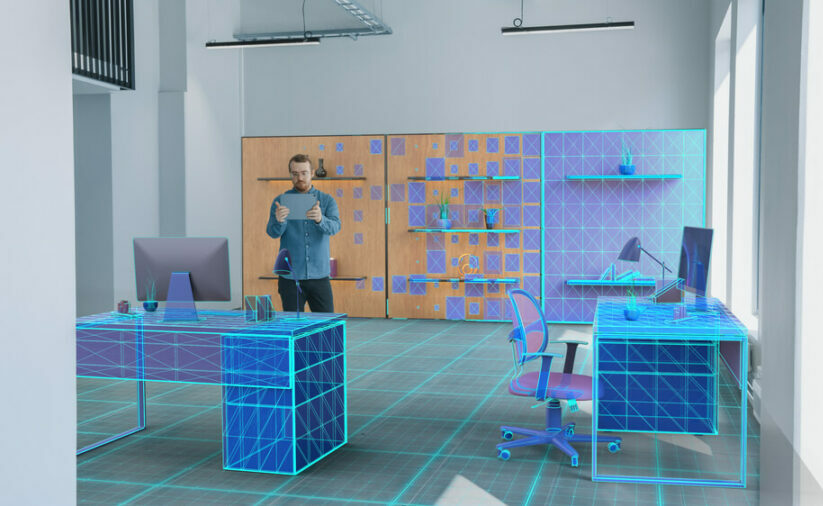The corporate environment has been continuously evolving and influenced by rapid digitalization, robotization processes, and growing connectivity overall. Its recent increase was triggered by post-pandemic trends that brought work culture to a whole new level, with hybrid workspaces becoming part of our daily life, according to Kaspersky, a global cybersecurity and digital privacy company founded in 1997.
Corporate offices started to be filled with different innovations for remote collaboration and simulations, including more attention to human augmentation technologies. For instance, in the recent Discover 2030 vision presented by Nokia, human augmentation is seen as a key element in the future transformation of the corporate network that serves as a growth opportunity for business. The new IDC’s Human Augmentation Forecast 2021-2026 has also stated that European businesses are increasing their investments in augmentation tech.
Several years ago, someone would hardly imagine we will work at ‘metaoffice’. However, today it is not just a reality, but the only way the future office will be further developed.
Companies will need to adapt to new models of corporate office environments, and for this digital pathway, it is paramount to ensure several essentials – digital safety and inclusion.
Digital inclusion
While augmentation technologies aim to replace parts of the human body with an artificial implant, they’ve been also considered for improving quality of life. According to Kaspersky research, people considered improvements of physical health (40%) or eyesight (33%). Moreover, augmentation brings individuals’ skills to a new level providing benefits to the companies too as it helps address the workforce gaps the world foresees.
So, a company’s approach to “metaoffices” should eliminate such negative scenarios as enhancement of cognitive and physical abilities that lead to the division of “superhumans” and those people who decided not to augment themselves. An enterprise should consider the work environment is a comfortable and inclusive place for such people, and social support for those employees who aim to augment themselves.
Read: 5 tips to keep your business protected during the holidays
Digital security
The rapid growth of the global human augmentation market, expected to grow four times to $498 billion by 2028, has been also accompanied by uncertainty and security risks. Concerns on this matter are not groundless.
According to Kaspersky’s research, despite the growing popularity of bionic enhancements, the attitude towards them is not always positive. For instance, nearly 9 in 10 (88%) people were concerned that their augmented bodies could become a target of cybercriminals. In terms of human security, the questions that arise are about digital (identity or data theft) as well as physical safety. Without any doubt, augmented people should be protected from possible threats from bionic devices.
“However, when speaking about businesses and corporate security in this regard, more things are at stake,” comments Marco Preuss, Deputy Director, Kaspersky Global Research & Analysis Team. “It is not only about the personal data of augmented people, but about the possibility to gain wider access to a corporate IT infrastructure. No one would ever want to have such a compromise leading to a major loss to the business. But is it the reason to prohibit them at all? Don’t rush to take such decisions.”
In order to mitigate security risks, the creation of a safe corporate environment is needed. Kaspersky has been continuously exploring the potential of human augmentation and evaluating security challenges associated with them. The first and foremost solution is a comprehensive cybersecurity policy for bionic devices. Presenting a color-coded zones approach, it is designed to secure a workspace for everyone and everywhere depending on the maturity of internal IT infrastructure.
From light “green” and “yellow” zones covering public areas (parking, loading and unloading zones or lobbies), to sensitive “red” zones where such facilities as data centers and server rooms can be located. This policy offers a range of standardization processes and enhances security granting better inclusion of employees using bionic devices into corporate affairs when in the office.
“Although the speed of human augmentation developments in the corporate environments would depend on the ability of a business to move quickly and efficiently, the questions of security and inclusion can be ignored. With this in mind, companies can provoke more opportunities for augmented people to be included in the corporate environment as well as for workplace transformation so everyone could jointly contribute to the creation and development of metaoffices,” comments Marco Preuss, Deputy Director, Kaspersky Global Research & Analysis Team.
For more on technology news, click here.








